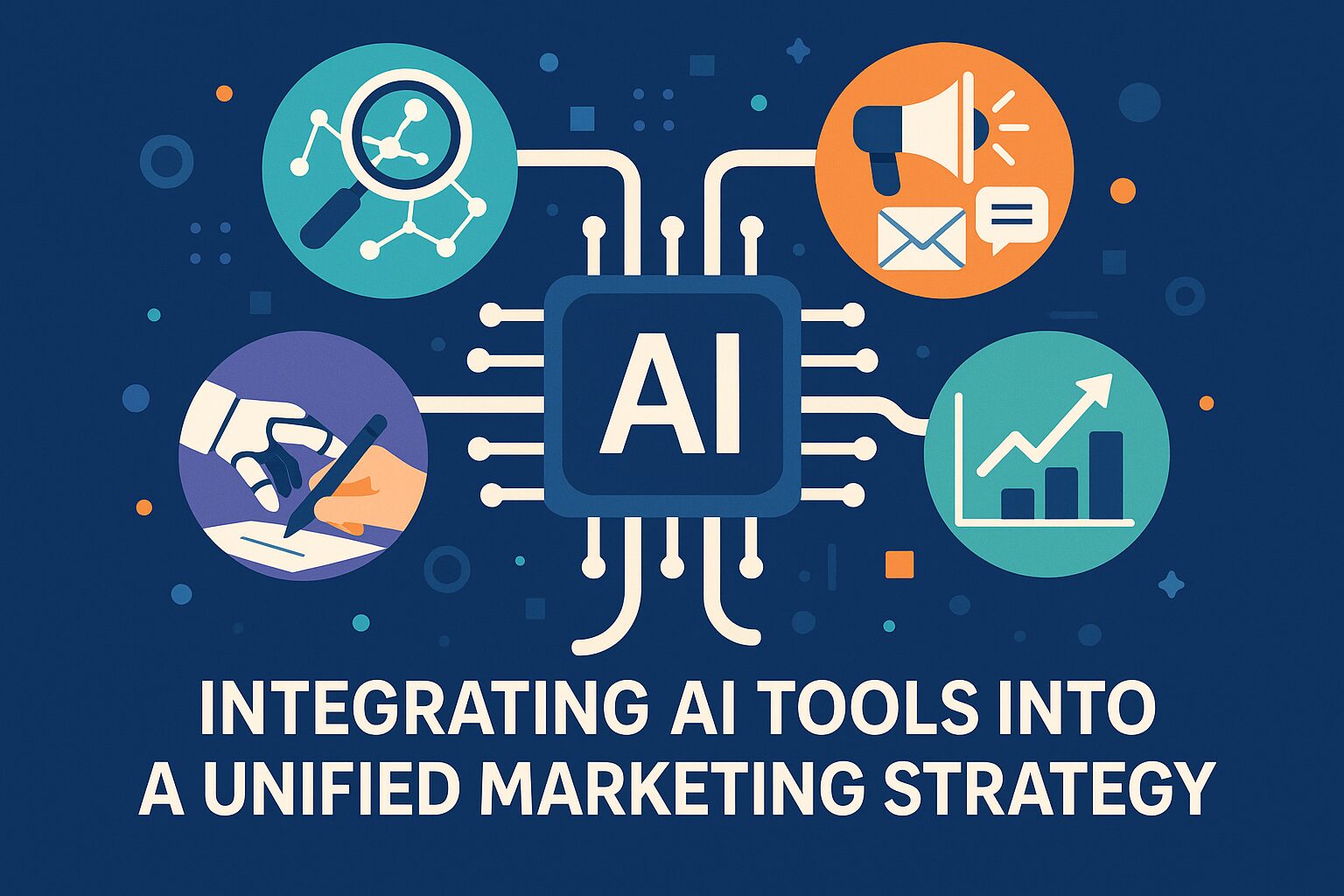For leaders in medium and large businesses, the promise of AI in marketing can feel overwhelming. The market is saturated with tools, each claiming to be the next big thing. To cut through the noise and build a truly effective marketing stack, you need a clear framework. A genuine AI marketing tool is not just a software with a smart feature; it’s a platform that applies machine-learning (ML) or large-language-model (LLM) techniques to at least one of four core pillars of marketing.
The Four Pillars of AI Marketing
This four-pillar lens helps you evaluate tools based on their “Jobs-to-Be-Done,” typical return on investment (ROI), and core function. By organizing your strategy around these pillars, you can avoid tool sprawl and build a lean, powerful tech stack.
1. Intelligence & Research
This pillar is about gaining a competitive edge through foresight. AI tools in this category analyze vast amounts of data to uncover actionable insights.
- Jobs-to-Be-Done: Trend spotting, competitor alerts, and voice-of-customer mining.
- Typical ROI Window: 2–4 weeks. The insights inform strategy and lead to more effective campaigns.
- Examples:
- Perplexity AI: Provides real-time, cited answers for niche markets, helping you research new opportunities quickly.
- Sprout Listening: An enterprise-grade social sentiment dashboard that uses AI to analyze social conversations at scale.
- Similarweb Digital Research: Uses machine learning to identify traffic and keyword overlaps with competitors.
2. Creation
This is where AI directly impacts content production, dramatically speeding up workflows. Tools here leverage LLMs to generate copy, visuals, and video.
- Jobs-to-Be-Done: Generating copy, visuals, video, and AI-generator text output.
- Typical ROI Window: Immediate. These tools instantly reduce the time and cost of content creation.
- Examples:
- Jasper & Copy.ai: Brand-tone copywriters that generate content for everything from ad headlines to full blog posts.
- DALL·E 3 & Midjourney: Fast, AI-driven visual generators for photorealistic or illustrated images.
- Synthesia: Creates avatar-led videos for demos and onboarding in over 140 languages.
3. Personalisation & Orchestration
This pillar focuses on creating highly relevant customer experiences at scale. These platforms use AI to power dynamic segmentation and cross-channel marketing flows.
- Jobs-to-Be-Done: Dynamic segmentation, cross-channel flows, and personalized communication.
- Typical ROI Window: 4–8 weeks. ROI is realized as customer engagement and conversion rates improve over time.
- Examples:
- Albert.ai: A self-optimizing engine for ad sets across Meta, Google, and YouTube, continually adjusting bids and creative.
- Optimove: Hyper-segments CRM journeys and uses predictive churn models to improve customer retention.
- Drift Conversational AI: A chatbot that qualifies leads and books demos, providing a personalized sales experience 24/7.
4. Optimisation & Decisioning
The final pillar is about continuous performance improvement. AI tools in this category analyze data to inform critical decisions, from budget allocation to A/B testing.
- Jobs-to-Be-Done: Budget allocation, predictive scoring, and A/B testing.
- Typical ROI Window: Ongoing. The system continuously learns and improves over time.
- Examples:
- Google Performance Max: An AI-driven budget routing tool that allocates spend across Google channels for maximum efficiency.
- FullStory: Session replay with frustration prediction, helping you identify and fix user experience issues before they become widespread.
- Amplitude AI Insights: Behavioral analytics that automatically surface drop-offs and key user patterns
Strategic Implementation: Pitfalls to Avoid
Implementing AI is more than just buying a tool; it’s a strategic process. Here are three common pitfalls to dodge:
- Tool Sprawl: Adopting too many platforms creates data silos and operational inefficiency. Your goal should be a lean stack of six core platforms or fewer that work together seamlessly.
- Shadow AI: Unsanctioned tools can risk intellectual property leaks and non-compliance with regulations like SOC-2 or GDPR. Always vet vendors and choose compliant solutions.
- One-and-Done Mindset: AI models drift over time. You need to schedule quarterly prompt reviews and data audits to ensure the models remain aligned with your brand voice and strategic goals.
FAQ
Q1. What are the best free AI marketing tools for startups?
Perplexity AI, Gumloop, Canva Magic Media and Zapier AI Agents each offers high-impact features, from ai generator text drafts to automated workflows, without upfront cost.
Q2. How do AI marketing tools cut customer-acquisition cost?
They automate targeting, creative generation (including ai generator text), and bid optimisation, trimming wasted spend while boosting conversion rates
ROITHM Can Help You Get Started
At ROITHM, we understand that successfully integrating AI marketing tools is more than just purchasing software. It’s about a holistic strategy that aligns technology with your business objectives, data infrastructure, and organizational culture. We specialize in helping medium and large enterprises navigate this complex landscape, from initial use-case shortlisting to full-scale deployment and ongoing optimization. Our applied AI workshops and expert consultation can help you build a robust and compliant AI roadmap, ensuring your investment drives measurable results and sustainable growth.
Contact us today to learn how we can help you implement these solutions and unlock your marketing potential.

